Sony VPL-VW200 SXRD Video Projector Measurements
Summary
• The Sony VPL-VW200 offers superb resolution in both HDMI and component, particularly at 1080i/p.
• The set's color performance was good out of the box in the Low color temperature setting, but improved significantly after calibration. In the Normal setting the color gamut was virtually ideal.
• The peak contrast was stunning with the Advanced Iris feature, but the operation of the dynamic iris was not always transparent in operation. The peak contrast and black level with a manual iris setting, however, were still very good and competitive with most of the better home theater projectors we have tested.
Details
Settings
Keep in mind that unit-to-unit sample variations, the viewing environment, and the source might render the settings we used, shown below, less than optimum on some samples. We strongly recommend that you confirm the results on your sample by using one of the many display setup DVDs that are available. This will help you to set up the user video controls correctly, and get as close as possible to an optimum picture short of a full calibration. The latter is best left to a competent and properly equipped technician, including those trained and certified by the Imaging Science Foundation (ISF).
Picture Mode: User
Cinema Black Pro: Manual (92)
Motionflow:
Film Projection: Mode3
Motion Enhancer: Off
Contrast: 92
Brightness: 50
Color: 50
Hue: 50
Color Temp: Custom1
White Balance (Custom1):
Gain: Red 1, Green 1, Blue -10
Bias: Red 6, Green -2, Blue -2
Sharpness: 10
Noise Reduction: Off
DRC Mode: Off
Film Mode: Auto1
Black Level Adj: Low
Gamma Correction: Gamma1
x.v.Color: Off
RCP: Off
Color Space: Normal
Overscan: Off
Cooling System: Standard
Color System: Auto
V Keystone: Off
Sharpness and Resolution
With a 1080i HDMI input the sharpness test pattern showed a crisply defined, 1-pixel-on line. Neither edge enhancement nor obvious softening was visible at low Sharpness settings, though I ultimately settled on a setting of 10.
At 720p, the 1 pixel-on line was good, but not as crisp as in 1080i. There was also some non-defeatable horizontal edge enhancement in 720p even with the Sharpness set to zero. The same was true at 480i and 480p, though at these standard definition resolutions such a result is common.
The component sharpness, at all resolutions, was similar, though slightly less pristine than with HDMI, a difference visible mainly with 1080i test patterns.
The luma (B&W) and chroma (color) response at the maximum 37.1MHz burst frequency of my AccuPel test pattern generator ranged from very good to excellent at all resolutions over HDMI. Some roll off was visible in the 1080i luma response at this frequency, but the line structure was still clean and well defined. The luma response was down a bit more with 1080i component at the maximum frequency than in HDMI, but was still clearly visible and usable.
The 1080p luma and chroma multiburst patterns on the Spears and Munsil HD DVD/Blu-ray test disc(s) also showed very good to excellent performance out to the maximum burst frequency.
Turning on the DRC feature, however, seriously compromised the 37.1MHz response at 1080i, with the luma response almost completely gone at that frequency. Leave DRC off.
Color In the Low color temperature setting, the Sony's pre-calibration color temperature was very uniform across the brightness range, but 500-600K low (Fig.1). Calibration brought this much closer (Fig.2).
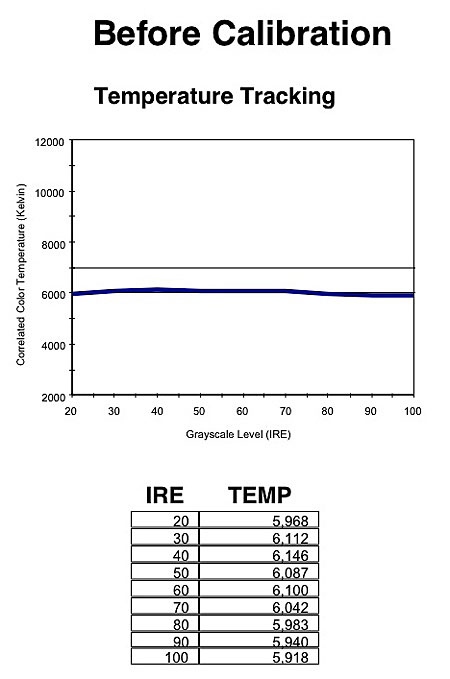
Fig.1
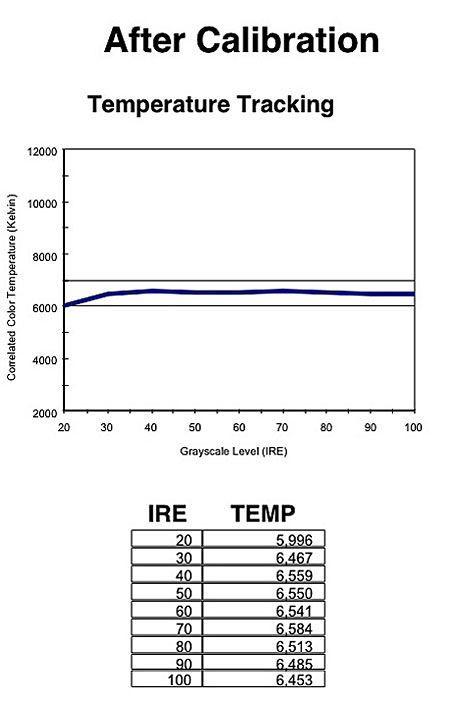
Fig.2
Figs.3 and 4 show that the color balance was significantly better after calibration, apart from some excess of red at very low brightness levels. Ideally, red, green, and blue should all overlap in a single horizontal line at the center of this chart.
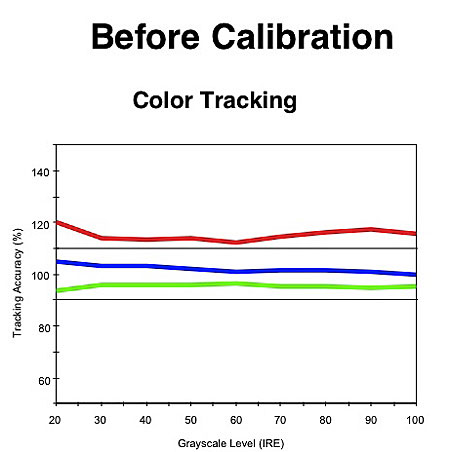
Fig.3
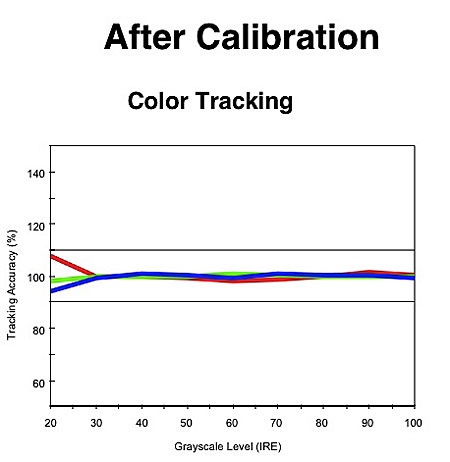
Fig.4
The primary color points on the Sony, in the Normal Color Space setting (Fig.5) were nearly a mapped overlay of the desired color space. (The white triangle outlines the Sony's Normal color space, with the primaries at the peaks of the triangle; the black triangle encloses the standard REC 709 color space.) In the Wide setting, however (Fig.6) the colors are oversaturated, particularly red and green. Some viewers will prefer the Wide setting, but it will not reproduce the source material accurately.
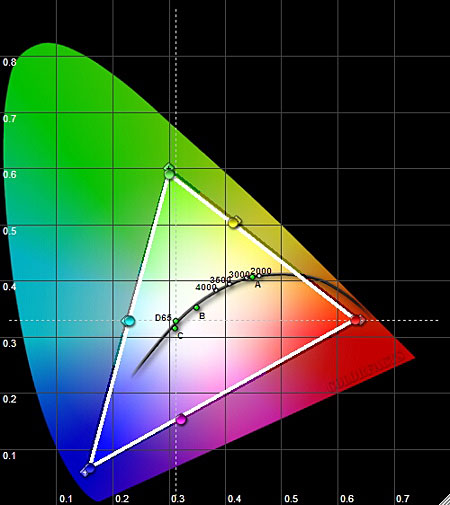
Fig.5
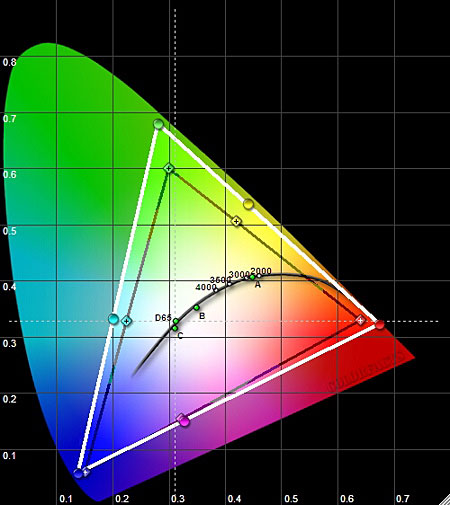
Fig.6
Contrast and Overscan
In the Auto2 Advanced Iris setting, I measured a peak contrast ratio of 17,500:1 (!) (17.5foot-Lamberts peak white, 0.001fL video black). In practice, this may be somewhat less, since 0.001 is the lowest specified sensitivity of our Minolta LS-100 light meter. But in any measurement universe this is an impressive number, even if it is short of Sony's claim of 35,000:1.
But as noted in the review, I preferred using the Manual iris setting. At a setting of 92 (nearly wide open), I measured a peak contrast ratio of 3200:1 (16fL peak white, 0.005fL video black). Not as amazing, but still a very respectable result.
The maximum peak output I could get from the projector, with the Iris Off (wide open) and the Contrast set to 99 was 19.6fL (a setting of 100 clipped the whites above 100IRE). Together with a 0.006fL black level at this setting, this resulted in a peak contrast ratio of 3267:1.
Overscan in both component and HDMI, with the Overscan control set to Off, was 0.5% or less at all resolutions, in both HDMI and component.
- Log in or register to post comments




































































